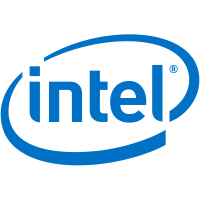Intel Arc A530M vs NVIDIA GeForce RTX 4050 Mobile
Comparative analysis of Intel Arc A530M and NVIDIA GeForce RTX 4050 Mobile videocards for all known characteristics in the following categories: Essentials, Technical info, Video outputs and ports, Compatibility, dimensions and requirements, API support, Memory. Benchmark videocards performance analysis: PassMark - G2D Mark, PassMark - G3D Mark, Geekbench - OpenCL, 3DMark Fire Strike - Graphics Score.
Differences
Reasons to consider the Intel Arc A530M
- Around 77% lower typical power consumption: 65 Watt vs 115 Watt
- Around 33% higher maximum memory size: 8 GB vs 6 GB
- Around 13% better performance in PassMark - G2D Mark: 713 vs 630
| Specifications (specs) | |
| Thermal Design Power (TDP) | 65 Watt vs 115 Watt |
| Maximum memory size | 8 GB vs 6 GB |
| Benchmarks | |
| PassMark - G2D Mark | 713 vs 630 |
Reasons to consider the NVIDIA GeForce RTX 4050 Mobile
- Videocard is newer: launch date 2 year(s) 4 month(s) later
- Around 62% higher core clock speed: 1455 MHz vs 900 MHz
- Around 35% higher boost clock speed: 1755 MHz vs 1300 MHz
- Around 13% higher texture fill rate: 140.4 GTexel/s vs 124.8 GTexel/s
- Around 67% higher pipelines: 2560 vs 1536
- A newer manufacturing process allows for a more powerful, yet cooler running videocard: 4 nm vs 6 nm
- Around 14% higher memory clock speed: 2000 MHz, 16 Gbps effective vs 1750 MHz, 14 Gbps effective
- Around 94% better performance in PassMark - G3D Mark: 14441 vs 7451
- Around 51% better performance in Geekbench - OpenCL: 74538 vs 49330
| Specifications (specs) | |
| Launch date | 2023 vs 1 Aug 2023 |
| Core clock speed | 1455 MHz vs 900 MHz |
| Boost clock speed | 1755 MHz vs 1300 MHz |
| Texture fill rate | 140.4 GTexel/s vs 124.8 GTexel/s |
| Pipelines | 2560 vs 1536 |
| Manufacturing process technology | 4 nm vs 6 nm |
| Memory clock speed | 2000 MHz, 16 Gbps effective vs 1750 MHz, 14 Gbps effective |
| Benchmarks | |
| PassMark - G3D Mark | 14441 vs 7451 |
| Geekbench - OpenCL | 74538 vs 49330 |
Compare benchmarks
GPU 1: Intel Arc A530M
GPU 2: NVIDIA GeForce RTX 4050 Mobile
| PassMark - G2D Mark |
|
|
||||
| PassMark - G3D Mark |
|
|
||||
| Geekbench - OpenCL |
|
|
| Name | Intel Arc A530M | NVIDIA GeForce RTX 4050 Mobile |
|---|---|---|
| PassMark - G2D Mark | 713 | 630 |
| PassMark - G3D Mark | 7451 | 14441 |
| Geekbench - OpenCL | 49330 | 74538 |
| 3DMark Fire Strike - Graphics Score | 1788 |
Compare specifications (specs)
| Intel Arc A530M | NVIDIA GeForce RTX 4050 Mobile | |
|---|---|---|
Essentials |
||
| Architecture | Generation 12.7 | Ada Lovelace |
| Code name | DG2-256 | AD107 |
| Launch date | 1 Aug 2023 | 2023 |
| Place in performance rating | 166 | 167 |
Technical info |
||
| Boost clock speed | 1300 MHz | 1755 MHz |
| Core clock speed | 900 MHz | 1455 MHz |
| Manufacturing process technology | 6 nm | 4 nm |
| Pipelines | 1536 | 2560 |
| Pixel fill rate | 62.40 GPixel/s | 56.16 GPixel/s |
| Texture fill rate | 124.8 GTexel/s | 140.4 GTexel/s |
| Thermal Design Power (TDP) | 65 Watt | 115 Watt |
| Transistor count | 11500 million | |
| Peak Double Precision (FP64) Performance | 140.4 GFLOPS (1:64) | |
| Peak Half Precision (FP16) Performance | 8.986 TFLOPS (1:1) | |
| Peak Single Precision (FP32) Performance | 8.986 TFLOPS | |
Video outputs and ports |
||
| Display Connectors | Portable Device Dependent | Portable Device Dependent |
Compatibility, dimensions and requirements |
||
| Form factor | IGP | IGP |
| Interface | PCIe 4.0 x8 | PCIe 4.0 x16 |
| Supplementary power connectors | None | |
API support |
||
| DirectX | 12 Ultimate (12_2) | 12 Ultimate (12_2) |
| OpenCL | 3.0 | 3.0 |
| OpenGL | 4.6 | 4.6 |
| Shader Model | 6.6 | 6.7 |
| Vulkan | ||
Memory |
||
| Maximum RAM amount | 8 GB | 6 GB |
| Memory bandwidth | 224.0 GB/s | 192.0 GB/s |
| Memory bus width | 128 bit | 96 bit |
| Memory clock speed | 1750 MHz, 14 Gbps effective | 2000 MHz, 16 Gbps effective |
| Memory type | GDDR6 | GDDR6 |










